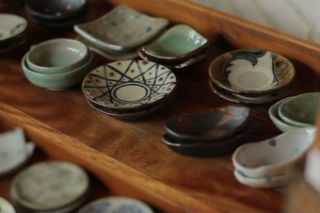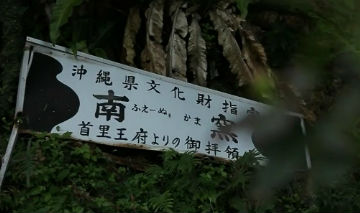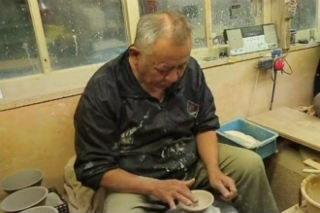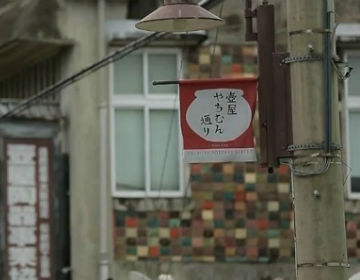Street with many Tsuboya-yaki
We took a stroll around Tsuboya Yachimun Street near Kokusaidori Street. ”Yachimun” means ceramics in Okinawa dialect. ”I’ve never seen Okinawa ceramics closely,” said Nakata. The street was lined with many shops which handle both classical and modern-arranged Yachimun.

Ceramics found only in Okinawa
As we walked along, we came across ”Fe-Nu Kama” (southern kiln) among the lush green plants. It is said to be bestowed from the Shuri royal government, and is designated as the Important Cultural Treasure of Okinawa Prefecture. The kiln is built in climbing kiln style, and takes advantage of the sloped landscape allowing the power of the combustion gas to effectively fill up all kilns.

Reunion at Ikutou-en with the Tsuboya Potter
We paid a visit to a potter of Tsuboya-yaki, Ikutou-en. Tadashi Takaesu, the sixth-generation master potter and a certified traditional art craftsman, has been producing Tsuboya Yachimun here. ”The arrangement of colors like blue, green and brown are very Okinawan”, remarked Nakata. Takaesu let us observe the process of ”tobi kanna” to make designs on the rim of a plate with a plane. It is a technique where a plane with a thin, repulsive blade is used to cut out designs. Nakata, who was observing the work close by, let out a cry of admiration. A picture of a fish was drawn in just seconds, and a Tsuboya Yachimun was completed.




